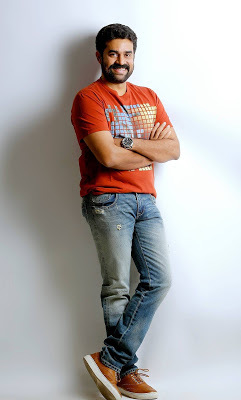Shevlin Sebastian's Blog, page 70
June 27, 2017
A Pistol For Safety
Published on June 27, 2017 22:47
June 25, 2017
The Old And The Beautiful
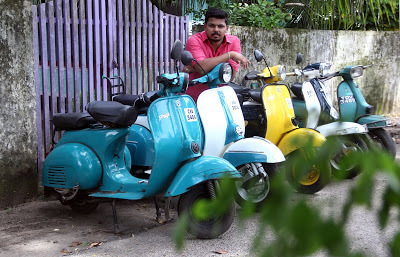 Vijesh KV has an unusual passion: he collects scooters of earlier times
Vijesh KV has an unusual passion: he collects scooters of earlier times Photo by Melton Antony
By Shevlin Sebastian
When Vijesh KV travels on his white-and-blue Lambretta scooter, in the suburb of Palluruthy, Kochi, the people do a double-take. It looks different from the scooters of today. And it has a odd-sounding horn, like an animal grunt. But it moves smoothly, and efficiently. It is difficult to believe that the scooter is 43 years old.
Vijesh, a tour guide, got it in a most unexpected manner. Two years ago, he was travelling from Thiruvananthapuram to Kochi. When the bus stopped at Kayamkulam, Vijesh saw a 70-year-old man riding a Lambretta. It had a bit of rust, some areas were dented and the paint was peeling.
Vijesh immediately got down and managed to meet the man, Ramachandran. “I told him that I have a collection of scooters,” says Vijesh. “He immediately said that he was not planning to sell his vehicle.”
Vijesh then showed the photos of the other vehicles on his mobile. Eventually, they exchanged numbers. “I told Ramachandran that whenever he decided to sell, he should call me,” says Vijesh.
One week later, Vijesh did get a call from Ramachandran. “He told me that he did not want to sell to youngsters, as he was afraid they would not look after the vehicle,” says the thirty-eight-year-old Vijesh. “He felt that I would care for it.” In the end, Vijesh bought it for Rs 30,000.
Incidentally, it was in 2000 that Vijesh bought his first scooter. Vijesh used to work in the sales department of a plywood company. Right next to it was a godown. Vijesh noticed a Bajaj Chetak (1987), lying in an abandoned condition. It belonged to an Army man who was working as a security guard.
“When I asked him what he was going to do with it, he replied that he was planning to sell it as scrap,” says Vijesh.
When Vijesh asked how much he expected, the Army man said, “Rs 2000.” Vijesh agreed to pay the money. The scooter was rusted, and had no mud guard. “But there was a particular shape to it,” says Vijesh. “I felt that if I worked on it, I could bring it back to a nice condition.”
So Vijesh took it in an auto-rickshaw to his cousin Vinod's workshop. Vinod looked at it and told Vijesh it would be a costly affair to restore it to a good condition. “I am ready to spend,” said Vijesh.
In the end, the scooter was restored, but at a cost of Rs 24,000!
When asked about his fascination for old scooters, Vijesh says, “These vehicles give a far smoother ride than the current models. One reason is that it is 30 kgs heavier. Secondly, there are spring seats, so you don't suffer from back pain. Thirdly, when you manually change the gears, you feel connected to the vehicle.”
However, it is not easy to maintain these scooters. Since production has stopped, it is very difficult to get spare parts. In fact, Vijesh has to go a particular shop in Thrissur, to get the parts. But they are quite expensive. “For example, the original price of an emblem is Rs 30, but I have to pay Rs 300,” says Vijesh.
Another drawback is that there are very few mechanics who would like to repair them. “They say it takes too much time,” says Vijesh. In fact, at this moment, there are only three mechanics in Palluruthy, who do the work.
But that has not deterred Vijesh. He has set up the Old Town Scooters Cochin page on Facebook, where people who have the same passion, exchange news and information, and help each other.
There have been a few moments of serendipity. Last month, Vijesh went to Thrissur on his Lambretta to buy some parts. On the way, a car, with some youngsters, began following him. He could see that they were filming him on their mobile. After a while, they came abreast and asked him to stop.
They were a group who were interested in old two-wheelers. They invited Vijesh to take part in a vintage scooter show at their home town of Mallapuram, 80 kms away. Vijesh agreed. One day, he loaded his scooters on a tempo and took them to Mallapuram. “It was a good experience,” he says. “More than 200 people came. I met a lot of scooter collectors. And we have stayed connected.”
Vijesh, a father of two young girls, pauses and says, “Many people have different type of enthusiasms. My passion will always remain for the old scooters. So, I will continue to add to my collection.”
(Sunday Magazine, The New Indian Express, South India and Delhi)
Published on June 25, 2017 22:08
June 21, 2017
Kochi native Savitha Venugopal has co-written a book abou...

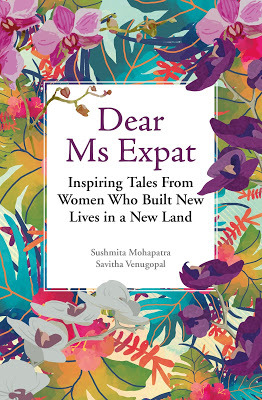
 Kochi native Savitha Venugopal has co-written a book about the experiences of expatriate women in Singapore
Kochi native Savitha Venugopal has co-written a book about the experiences of expatriate women in Singapore Photos: Savitha Venugopal (left) and Sushmita Mohapatra; the cover of the book; dazzling Singapore
By Shevlin Sebastian
When Kochi-born Savitha Venugopal flew to Singapore with her husband, Sanil, in June, 2013, she was full of optimism. Sanil had just secured a high-paying job in the IT industry, and, as a journalist in India, Savitha also expected to get a good job.
And in her first week itself, Singapore lived up to all her expectations. “It is a very neat and clean city,” says Savitha. “Everything worked and moved on time. Whatever paperwork we had to do was smooth and easy.”
But soon, Savitha hit a roadblock. Since she had come on a dependent visa, she was not allowed to work as a full-time staff. So Savitha looked for freelance opportunities, but those were hard to come by.
It was at this time that she met up with her former journalistic colleague, Sushmita Mohapatra. “We were talking about facing the same problem of not finding suitable work,” says Savitha. “It was a frustrating period. Then we discovered that there were other highly qualified women, who came to Singapore and discovered that they also could not work.”
That was when they got the idea to write a book about the experiences about expatriate women. This has just borne fruition. Published by the Singapore-based Marshall Cavendish, the book is titled, ‘Dear Ms Expat: Inspiring Tales From Women Who Built New Lives In A New Land’.
The book documents the lives of ten women, of varying backgrounds. So there are two Australians, two Americans, and one each from India, New Zealand, Austria, Switzerland, Tunisia, and United Kingdom. “The selection was done based on how interesting the stories were,” says Sushmita. While Sushmita wrote five profiles, Savitha did the others. “We edited each other's chapters so that there is an uniform style,” says Sushmita.
For Savitha, the most inspiring story was that of Carolyn Soemarjono, who is Singapore’s first boudoir photographer. She left school at 16, in a small town in Dubbo, in Australia. Then despite her lack of educational qualifications, she reached the top at multinational firm, Proctor & Gamble. Then she got married, had a child, and thereafter got divorced. Then she dated a colleague, who moved to Singapore and Carolyn followed with her daughter. She was doing well when she was laid low by ovarian cancer. Following extensive chemotherapy over two years, she recovered and discovered her passion for photography.
“Carolyn’s life was the most inspiring for me,” says Savitha. “And despite having done so much, she kept asking whether her story is worth it. I found it quite amazing that she was so humble.”
Asked about their conclusions, after finishing the book, Sushmita says, “There are many misconceptions about what expatriate life is like. People tend to think it is an easy and luxurious life. You can travel easily all across Asia. But there are a lot of struggles: cultural, emotional, and professional. However, Indians find it easier to adjust. For the Americans and the Europeans the difference in culture is very stark.”
As for Savitha, she missed the emotional support system back in Kochi. “I missed my friends, parents and relatives,” she says. “In Singapore, this network is missing completely.”
Asked to compare Kochi and Singapore, she says, “Singapore is extremely neat and clean. Unfortunately, garbage can be seen in many places at Kochi. Singapore has a lot of open public spaces where you can just hang around. In Kochi, there are very few public spaces. And women are much more safer in Singapore. I can go alone for a late night movie, without any problems.”
The book will be available for Indian readers on Amazon in September.
(The New Indian Express, Kochi and Thiruvananthapuram)
Published on June 21, 2017 23:59
The Joy Of Winning Awards
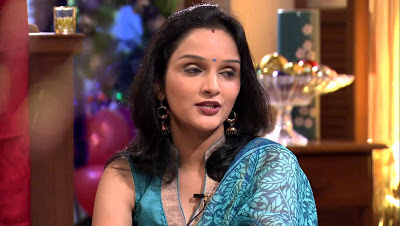 COLUMN: LOCATION DIARY
COLUMN: LOCATION DIARY By Shevlin Sebastian The shoot for the song, ‘Onnanam Kunninmel’ in the film, Mayilpeelikkavu (1998) was taking place inside a hall at Thiruvananthapuram. Jomol was clad in a black top and leggings and black shoes. She was acting opposite Kunchacko Boban, who was also dressed in a black jacket and trousers. The floor was made of a large white sheet with black etchings at different places. It was a dance sequence. But as she began moving on the floor, Jomol suddenly slipped and hit her head on the floor. “I felt a severe pain in my head,” she says. “Then I was rushed to the hospital. I was given an injection to lessen the pain. Then the doctor told me to rest. So I returned to the hotel. After a while the pain became less. I wanted to resume shooting but Anil [Babu, director] said no. The shooting resumed the next day.” After pain, she experienced a moment of joy. Jomol was aware she was on the short-list for the best actress state award. On one particular day, it was announced that the awards would be announced in the afternoon. But post -lunch, there was no announcement. Then Jomol was told that the jury was still going through the screenings. There was no announcement the entire day. “I was quite anxious,” says Jomol. The next day Jomol got a call at her hotel and told that she had won: for ‘Ennu Swantham Janakikutty’. Expectedly, she got a lot of congratulatory calls from friends, colleagues and the media. But her happiest moment occurred when, on the set, her father [KA John] came and gave her a tap on the back. “My dad is a non-expressive type of person, so this pat showed how much he felt proud of me,” says Jomon. “It was the most memorable moment for me.” Jomol had another memorable moment on the sets of ‘Punjabi House’. The climax was being shot in a house at Kochi in March, 1998. All the top stars were there. They included Dileep, Lal, Janardhanan, NF Varghese, Cochin Haneefa, Harisree Ashokan as well as the directors Rafi and MeCartin. Then a call came on the landline. “Usually, in those times, when a call came on the landline, it was only if there was an emergency,” says Jomol. “Somebody attended and they said it was for me. As I walked towards the phone, I felt nervous. I was wondering what happened and why I had got the call, and that, too, on the landline of this house.” A smiling Dileep said, “Jomol, it may be a call from your college saying that you had missed too many classes.” When Jomol picked up the phone, it was Dinesh Panicker, the producer of ‘Mayilpeelikkavu’. He said, “Congrats. Did you get the news?” Jomol said, “No, I did not get any news?” Then Dinesh told Jomol she had won a national film award. Jomol started laughing and said, “You are joking.” Dinesh said, “No, I am serious. You have really won the National Award.” Jomol was shocked to hear the news. Later, she came to know that it was a Special Jury Mention award for her role in ‘Ennu Swantham Janakikutty’. When she returned to the set, everybody was curious to know who had called Jomol. Jomol said, “I have won a National Award.” Immediately, there was a collective, “What!!!?” Jomol said, “Exactly!”Soon, there was an eruption of joy on the set. People ordered ice cream and chocolates. It was distributed to everybody. There was loud clapping and cheers. “I was in a daze,” says Jomol. “I was still not sure. But when it was announced on the TV, I finally realised it was true.”
(The New Indian Express, Kochi, Kozhikode and Thiruvananthapuram)
Published on June 21, 2017 00:39
June 19, 2017
Looking Back, With Wonder And Gratefulness
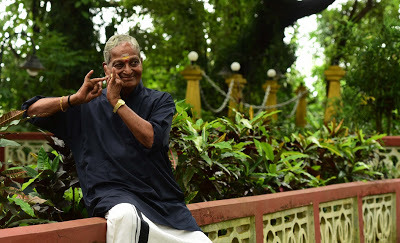
 The legendary Kathakali exponent, Kalamandalam Gopi looks back on his career, as his recent 80th birthday sparked a four-day celebration in Thrissur
The legendary Kathakali exponent, Kalamandalam Gopi looks back on his career, as his recent 80th birthday sparked a four-day celebration in ThrissurFirst photo by Albin Mathew
By Shevlin Sebastian
Mollywood superstar Mohanlal was stuck shooting for the film 'Velipadinte Pusthakam' in Thiruvananthapuram. Yet, he was keen to attend the public meeting at Thrissur honouring Kathakali maestro Kalamandalam Gopi on his 80th birthday in early June.
Through the help of mutual friends, he reached Thrissur by helicopter. “I was touched that Mohanlal took so much of trouble,” says Gopi.
In his speech, Mohanlal said, “I first began interacting with Gopiasan (asan = master) when he acted in the film, 'Vanaprastham' (1999). In the film, he played my father-in-law. Thereafter, we became friends. And whenever I met him, I would call him 'Father-in-law'.”
Gopi, as well as the audience, burst into laughter.
Gopi is regarded as one of the legends of the Kathakali art form. His biggest impact happened when he teamed up with the late Kottakkal Sivaraman (1936-2010), who acted as his heroine. They stunned the audience with their performance in the plays, 'Nalacharitam', 'Karnasapatam' and 'Rugmangada Charitam', among many other works, most of which are based on the Hindu epics, like the Mahabaratha.
It also helped that maestros like Sankaran Embranthiri, Hyderali and Venmani Haridas provided the vocal accompaniment.
“Gopi played a crucial role in popularising Kathakali as an art form,” says KK Gopalakrishnan, author of the well-received 'Kathakali Dance-Theatre: A Visual Narrative of Sacred Indian Mime'. “His name became synonymous as the hero of these plays, and his performances have become the sole yardstick for succeeding generations of artists and aficionados.
What helped were his many natural gifts. “Gopi has an expressive face with captivating eyes,” says Gopalakrishnan. “He is blessed with a deep rhythmic sense, and mesmerizing hand gestures. And is capable of sudden innovations during the course of a performance.”
While most of his contemporaries have passed away, Gopi is still going strong, in his 60th year of public performances. Asked the secret of his longevity, Gopi says, “God has been kind to me. Apart from that, it is the teaching of my gurus, and the ability to get over setbacks.”
Indeed, it has not been an easy journey. It began when Gopi was ten years old, and began learning Kathakali under Thekkinkattil Ravunni Nair at Nagallassery, near Pattambi. But one day, Ravunni hit Gopi with several strokes of the cane. The child was deeply upset. The next morning he boarded a bus and went to Pattambi.
He had heard that the Army was holding a recruitment camp there. When Gopi reached Pattambi he met a Muslim tea-shop owner who asked him where he was going. When Gopi told him, the shop owner told him he was too young to join the Army.
The man provided Gopi a breakfast, refused to take any money, and put him on a bus back home. “I will never forget the kindness of the man,” says Gopi. He returned to the house of Ravunni Nair and reconnected with his destiny. He later joined the Kerala Kalamandalam at Thrissur and trained under eminent gurus Padmanabhan Nair and Ramankutty Nair.
Very soon, Gopi started giving public recitals. A few years went by. He received a lot of plaudits. But he sensed an unspoken opposition among the other staffers, students and teachers of the Kalamandalam. It disturbed him.
One night, after dinner, he went to the rehearsal area and swallowed 12 sleeping pills. He threw the tablet packets outside the window. His wife Chandrika discovered them. Immediately she informed the other staffers.
Somehow, they managed to open the door, and rushed Gopi to the hospital. In the end, he survived. “It was as if I had received a second life,” says Gopi, a Padma Shri awardee. Thereafter, his career soared once again.
On asked whether he had any more wishes to be fulfilled, Gopi says, “Just one. The moment I can no longer dance I want my life to end.”
(Sunday Magazine, The New Indian Express, South India and Delhi)
Published on June 19, 2017 05:23
June 16, 2017
Chased By A Dog
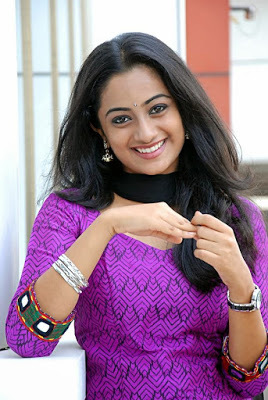 COLUMN: LOCATION DIARY
COLUMN: LOCATION DIARY Actor Namitha Pramod talks about her experiences in the films, 'Puthiya Theerangal', 'Role Models', 'Amar Akbar Anthony' and 'Pullipulikalum Aattinkuttiyum'
By Shevlin Sebastian
On the beach at Alleppey, Namitha Pramod noticed a dog moving around, following her everywhere. This was during the shoot of 'Puthiya Theerangal' (2012). She was playing a young girl called Thamara, who lives by the seashore. Soon, a shot was set up. Namitha was supposed to run along with comedian Dharmajan Bolgatty.
But as soon as they started running, the dog started chasing them. When director Sathyan Anthikad saw this, he immediately shouted, “Cut.” But when Dharmajan saw that the dog was still chasing them, he shouted, “Namitha, keep running.”
And so the pair carried on running, to avoid the dog. But the over-excited animal refused to stop. He also continued to run. “After a while, I was getting breathless and a bit scared,” says Namitha. “But Dharmajan kept urging me on.” And just when Namitha was about to collapse, the dog stopped suddenly. He had run out of breath and was panting heavily.
Soon, the crew members ran up and chased the dog away. “I have never run so much and so far,” says Namitha. “It's an experience I will never forget.” The duo returned to the set, cooled down, drank some water and resumed shooting.
There was more action on the sets of the upcoming 'Role Models'. Namitha plays an adventure sports trainer named Shreya. In one song sequence, on a beach in Goa, Namitha was driving a jet ski with hero Fahadh Faasil sitting behind her. Suddenly, a very big wave arose and hit the jet ski.
“The next thing I knew the ski had toppled over and both of us fell into the water,” says Namitha. “For a moment, I was completely disoriented. I saw black all around me. Thankfully I did not go under water, since I was wearing a life jacket.”
Even Fahadh was in a state of shock. “Looking back I realised that I made a mistake in riding the jet ski,” says Namitha. “There is a particular way to cut through the waves, and I was not able to do it. It was an embarrassing moment.”
On the sets of 'Amar Akbar Anthony' (2015), at Mattancherry, actor Prithviraj experienced an embarrassing moment. As soon as Namita, who plays the heroine opposite him, met him, she said, “I am a great fan of yours. I loved watching your movies from the time I was in Class 1.”
The moment Namitha said that, Prithviraj had a shocked look on his face. Then he said, “Okay, fine, but don't tell this to anybody.”
Then he told Namitha he was reminded of a similar experience, when he acted in the movie, 'Raavanan' (2010), with Aishwarya Rai and Vikram. As soon as he met Aishwarya he told her that he had been a great fan of hers since his teenage years. Aishwarya looked stunned.
Then Prithviraj told Namitha, “Now I understand why Aishwarya looked shocked. Because I am going through the same experience. Thank you Namitha.” And they both laughed.
On the sets of Lal Jose's 'Pullipulikalum Aattinkuttiyum' (2013), it was the turn of Namitha to feel embarrassed. “All my sequences and the songs opposite Kunchacko Boban ended up being shot in heavy rainfall,” says Namitha. Then in 'Vikramadithya' (2014), again by Lal Jose, it was raining endlessly. Again, most of the songs and the scenes had to be shot in the rain.
Lal Jose said, “Namitha, every time you come to my location it is raining.” In the end, the crew members gave her the name of 'Mayil' (Malayalam for peacock), the bird which always dances in the rain.
(Published in the New Indian Express, Kochi, Kozhikode and Thiruvananthapuram)
Published on June 16, 2017 02:11
June 15, 2017
A Date With Dates
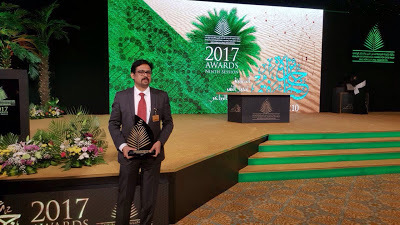
 Binu Antony has won the Khalifa International Award for Date Palm and Agricultural Innovation, worth Rs 1.75 crore. He talks about his work
Binu Antony has won the Khalifa International Award for Date Palm and Agricultural Innovation, worth Rs 1.75 crore. He talks about his workPhotos: Binu Antony at the award ceremony; the red palm weevil
By Shevlin Sebastian
(The New Indian Express, Kochi and Thiruvananthapuram)
Published on June 15, 2017 00:58
June 14, 2017
Showing Appreciation
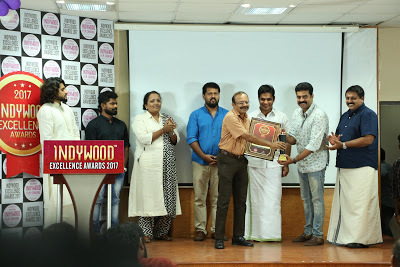
Indywood honours journalists in Kerala
Photo: Receiving the Indywood Media Excellence Award from actor Vijay Babu (second from right), as well as Hibi Eden, Ernakulam MLA (third from right). Others in the picture include (from left) musician Sabareesh Prabhaker, actor Romin Antony, Vidhya Ramaswamy, Founder of the International Centre for Intellectual Training and Empowerment, director Boban Samuel, and entrepreneur Sohan Roy (extreme right)
Indywood, a $10 billion project aimed at elevating the Indian film industry to a global platform, has honoured prominent Kerala-based journalists from the print, visual, online and radio media. Journalists were conferred with the prestigious Indywood Media Excellence Awards for their valuable contributions and constant efforts to uplift the film and media industry.
Apart from Lifetime Achievement Awards, special recognition awards was accorded to senior journalists, including Shevlin Sebastian (Senior Special Correspondent, The New Indian Express). The other awards were for professional excellence, film promotion, popular film books, best online media for film promotion, among others.
The awards were given away by Ernakulam MP KV Thomas, Hibi Eden, Ernakulam MLA, film-maker Boban Samuel, actor cum producer Vijay Babu, and others at an event held at Kochi.
(The New Indian Express, Kochi, Kozhikode and Thiruvananthapuram)
Published on June 14, 2017 02:30
June 13, 2017
The Best Of Both Worlds
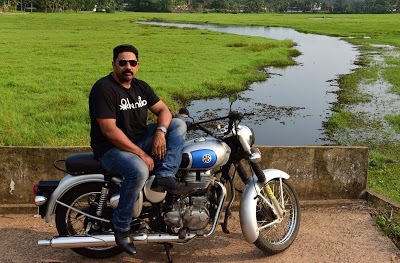
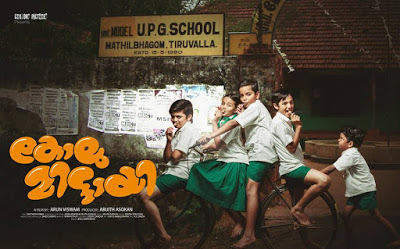 Police officer Arun Viswam, who had recently won a Kerala State Film Award for Best Children's Film, talks about his experiences
Police officer Arun Viswam, who had recently won a Kerala State Film Award for Best Children's Film, talks about his experiences
Photos: Arun Viswam. Pic by Albin Mathew; the film poster
By Shevlin Sebastian
But then he could be a star in the making. Arun hit the media spotlight, when his feature film, 'Kolumittayi', recently won the Kerala State Film Award for Best Children’s Film. (Sunday Magazine, The New Indian Express, South India and Delhi)
Published on June 13, 2017 01:45
June 11, 2017
A Lifelong Passion
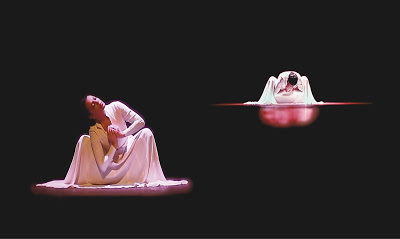
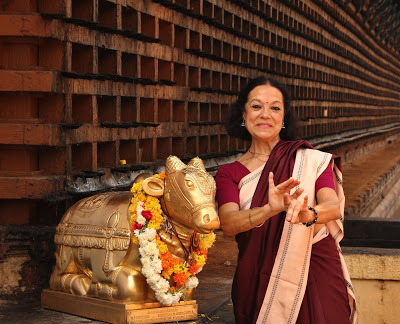 Frenchwoman Shakuntala fell in love with Bharatanatyam when she was 16. Today, she has performed in USA, Europe, Africa, apart from a recent performance in Kerala
Frenchwoman Shakuntala fell in love with Bharatanatyam when she was 16. Today, she has performed in USA, Europe, Africa, apart from a recent performance in KeralaPhotos: Shakuntala performing a Bharatanatyam triptych; at the Shiva Mahadeva temple at Vaikom. Photo by Albin Mathew
By Shevlin Sebastian
As the Vedic hymn breaks out on the loudspeakers at the Kalashakti Mandapam at Vaikom (25 kms from Kochi), Bharatanatyam exponent Shakuntala slowly raises both her arms upwards. Then she moves to one side and places a palm over her face. Shakuntala is wearing a striking silver top over white pjamas. On the right side of the stage, there is a large traditional lamp.
In the second segment, Shakuntala dances to a poem by Sufi poet Rumi and concludes with another poem called 'Living The Promises of the Soul' with music by French mystic philosopher Jean-Claude Genel.
Shakuntala performed this original Bharatnatyam triptych on her first visit to Kerala recently. What was unusual about this performance is that Shakuntala is a Frenchwoman. And she has been performing the Bharatanatyam for three decades now, in the USA, Europe, Africa and India.
Her passion for the Indian dance form happened rather accidentally. One day, in the late 1960s, when she was a teenager, she was walking along the banks of the River Seine in Paris. Suddenly, she decided to enter a bookshop. There, she came across a book called 'A Sacred Dance'. “There were a lot of photographs of Bharatanatyam,” says Shakuntala. “I became fascinated.”
At that time, she was studying ballet at a dance school. But it took her three years to start learning Bharatanatyam under Frenchwoman Malavika. After a four-year stint, she secured a scholarship from the Indian Council for Cultural Relations, as well as the French government and came to Chennai. There, she studied under Kalaimamani V.S Muthuswamy Pillai for many years.
Asked the charms of Bharatanatyam, Shakuntala says, “You can express yourself through movement and stories. There is a lot of scope for creativity. I don't know of a similar dance form which is so expressive. On the other hand, ballet is very formal. There is not much emotion. In Bharatanatyam, one dancer can do all the characters, while in ballet you need several other people.”
Not surprisingly, Shakuntala has dwelt on the feminine force. One of her dances is called Parvati. “It traces the life of the Goddess from childhood till she becomes Kali,” says Shakuntala. “But one of my more popular items is the fight between Shiva and Meenakshi. I performed it more than 150 times worldwide.”
Once, when she performed it in Delhi, at the conclusion, the green room was crowded with people who had come to congratulate her.
Incidentally, Shakuntala has been one of the earliest dancers to use Vachika Abhinaya (using speech during a recital). “I wanted to make Bharatanatyam accessible to foreigners,” she says.
Asked whether there is a difference in audience reaction, across continents Shakuntala says, “There is not much of a change. All human beings are affected by the same emotions.”
(Sunday Magazine, The New Indian Express, South India and Delhi)
Published on June 11, 2017 21:56

